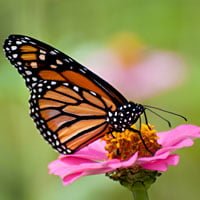60-day returns • free shipping on USA orders $129+


Usually the question goes something like this: “Nature study is a great idea, but I don’t know the names of the flowers and trees and birds, myself. What should I do?”
I know, I faced the same situation. But SCM Team member, Karen Smith, gave some great advice that helped me get started. And really, once I got started, the rest came along more easily.
I thought you might like to read her advice too.
Small Steps
Look for children’s books.
It is surprising how much information you will find in a children’s book. Check to see what your library has for children on specific plants, animals, and insects in your area.
It may be a good idea to search Amazon for books that are on specific topics. For example, maybe you want a book on chipmunks. Search Amazon for chipmunk books. Narrow it down to ones you are interested in, then search your library catalog to see if they are available. When I was doing research for the Outdoor Secrets Companion book, I found that there were many good children’s books on nature that were shelved with the picture books and not with the nature/science books, so knowing a few titles ahead of time will help you locate books in your library.
Identify plants in your yard.
Another thing you can do to help you learn to identify plants, animals, and insects in your region is to start small. Identify what is in your yard first. What plants do you have growing in your yard? Don’t limit yourself to just bushes and trees. Use your field guides to help you identify weeds, grasses, flowers, bushes, and trees. Really look at them and notice the shape of the leaves, what the ground is like where it grows (wet, dry, hard, good soil), what color and shape the flowers are, what the fruit looks like, if it has thorns or any other characteristic that will help you identify it in another setting. Draw a picture of it in your own nature journal.
Identify insects, animals, and birds in your yard.
Don’t forget to notice insects, animals, and birds that visit your yard. Identify them using your field guides. Notice their habits. What flowers do the different bees frequent? What foods do the different birds eat? With the birds you can use your sense of hearing to identify them and to know when they are claiming territories or when mating season is over. They have different songs for each. The Backyard Birdsong Guide: Eastern and Central North America would be good for learning the different bird songs. Also, WhatBird.com is a good source for identifying birds.
Expand to your neighborhood and your region.
Once you are comfortable with identifying things in your yard, start identifying what is in your neighborhood. Then, when you are comfortable with that, learn what is in your region of your state/province. Remember that what grows in a yard is not necessarily native to your area and will not be found in field guides. You may find visiting plant nurseries in your area helpful in identifying some of the trees, bushes, and flowers.
Remember to start small. Eventually you will be able to identify enough plants, animals, and insects that you will find it easier to share that knowledge with your children.

Audubon field guides are wonderful to use and relatively inexpensive. Not having a field guide has been our biggest hurdle.
I am making mini books for my grandson and I, labeling the plants in our neighborhood. He recently moved to the desert from Wisconsin, so this is all new to us. (I am here visiting for a few months) I pick five plants/insects/animals…etc at a time and make a mini book of our own photos, some of the photos feature him in the photo with the object.
I make them rhyme a little and use a book we love as a bit of a template – the book is “I Went Walking” by Sue Williams. The verse inside is “I went walking. What did you see? I saw a ____ Looking at me.”
I used terms like “growing next to me” rather than “looking at me”.
Our first book is titled “I Went Desert Walking”
I use the internet and field guides to identify the five things we are using for the book. For me, five at a time is not overwhelming.
This is the template we use for our books, we use a sheet of photo paper.
http://library.thinkquest.org/J001156/makingbooks/minibook/index.htm
Melissa
In sunny warm California
Enjoying her smartest, cutest, best-est grandson ever.
Neat link to the thinkquest site. Thanks! I am going to use that today, so my kids can make books about their favorite things they see outside (which will give me time to plan for next year.)
Heather@BlessingsPourOut